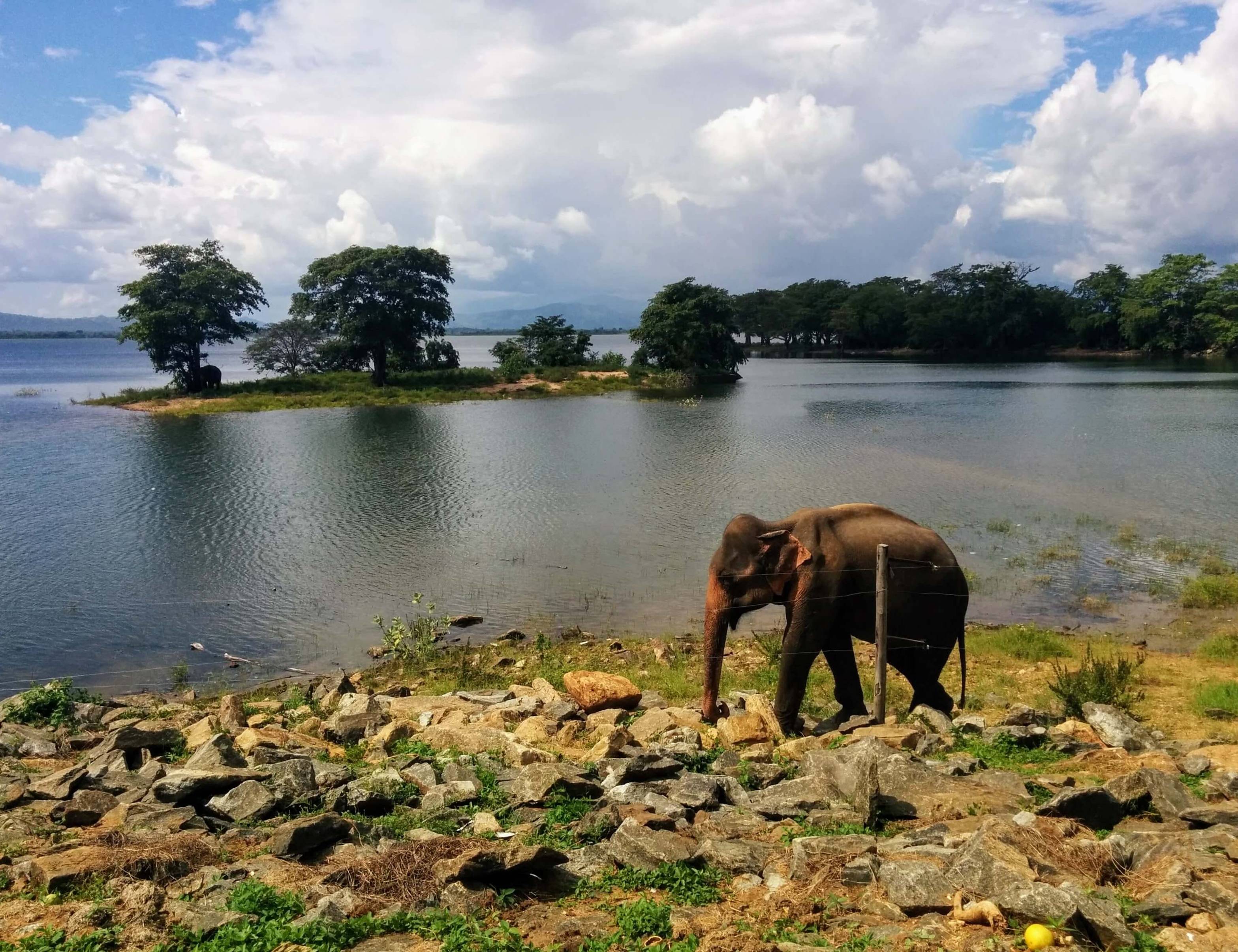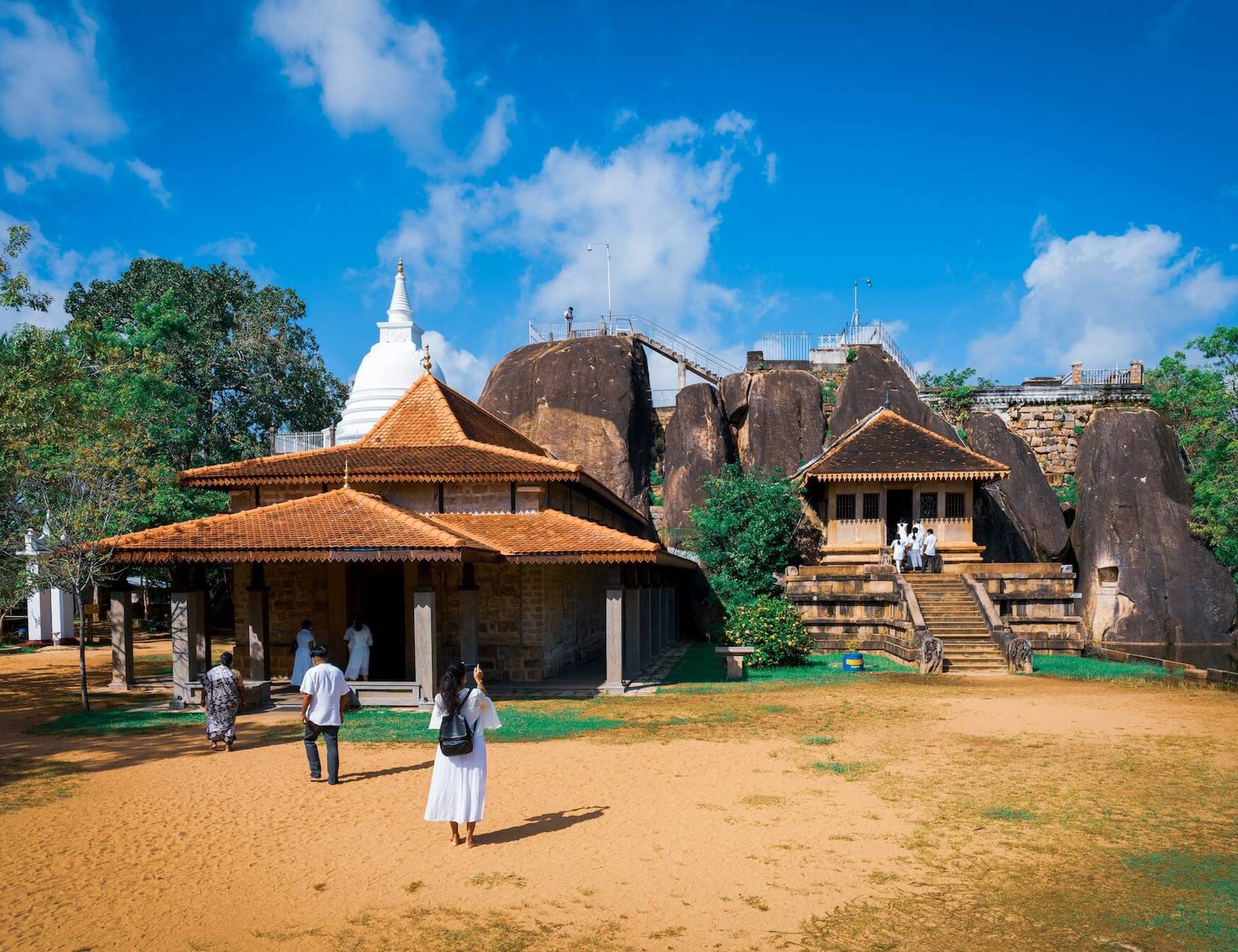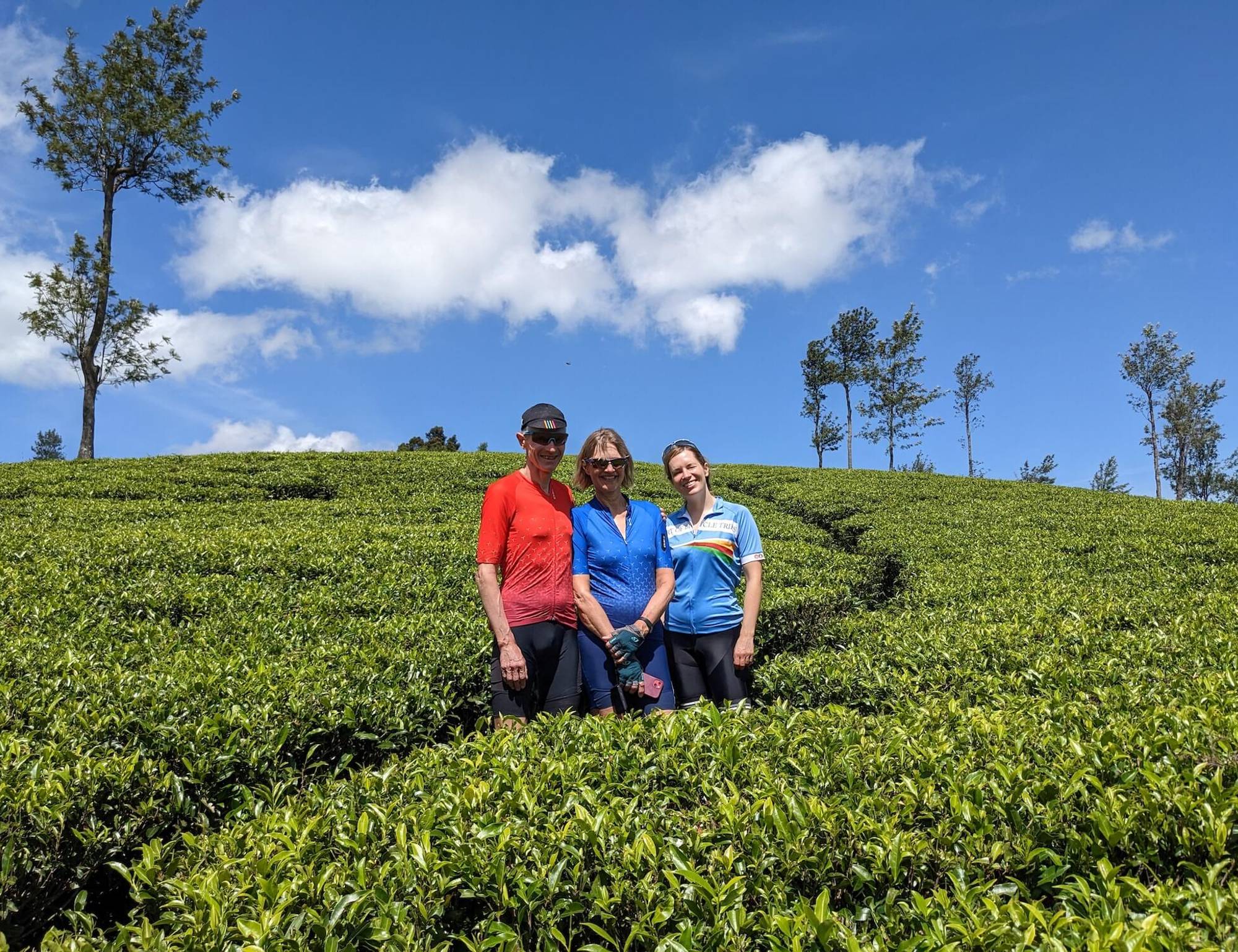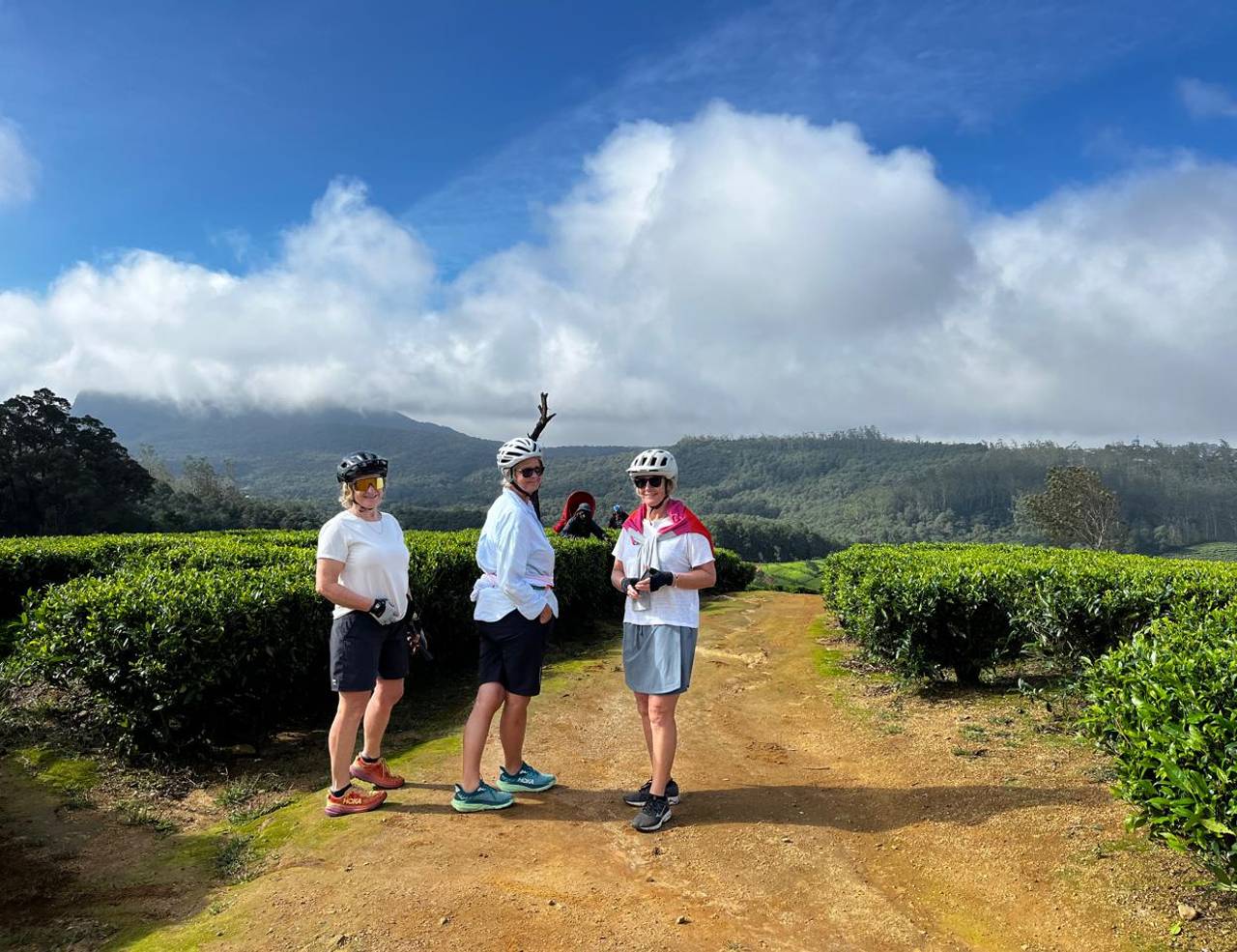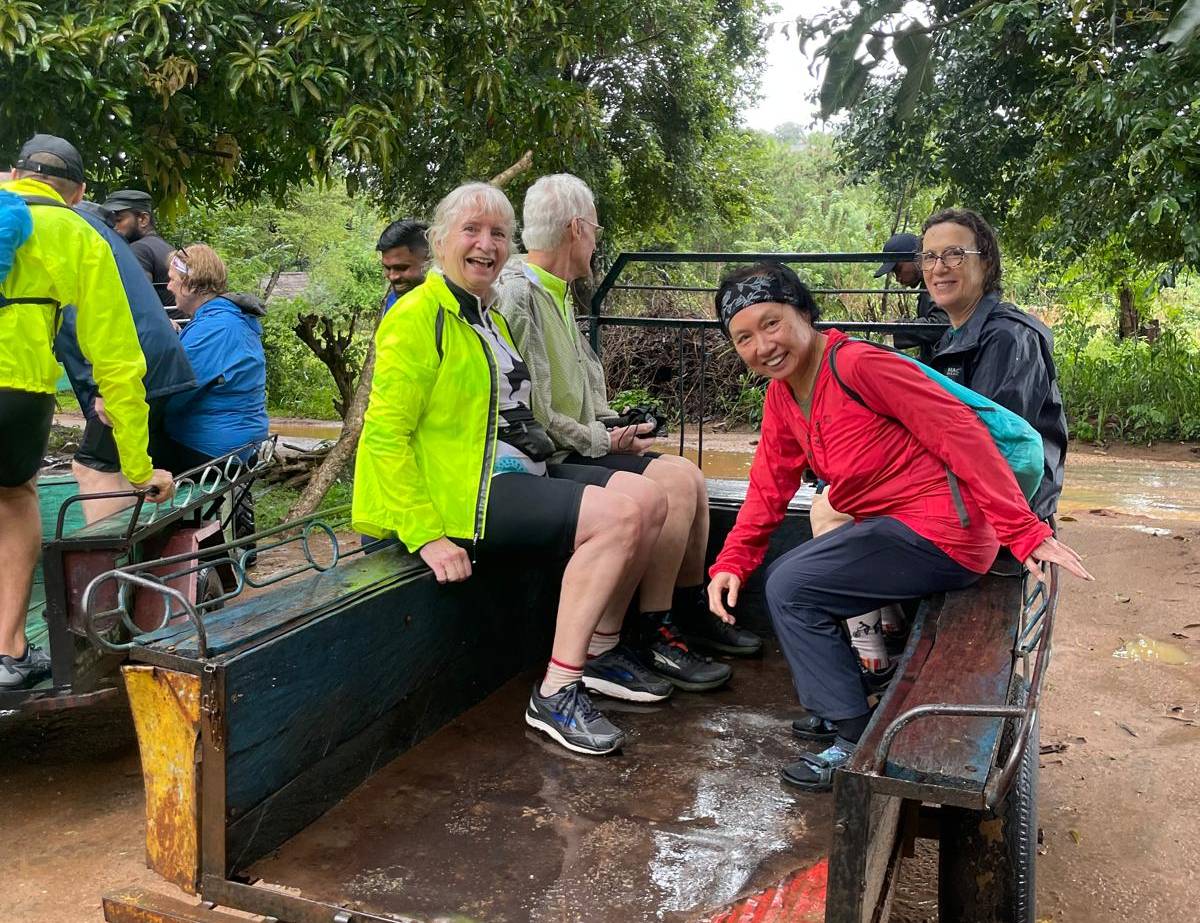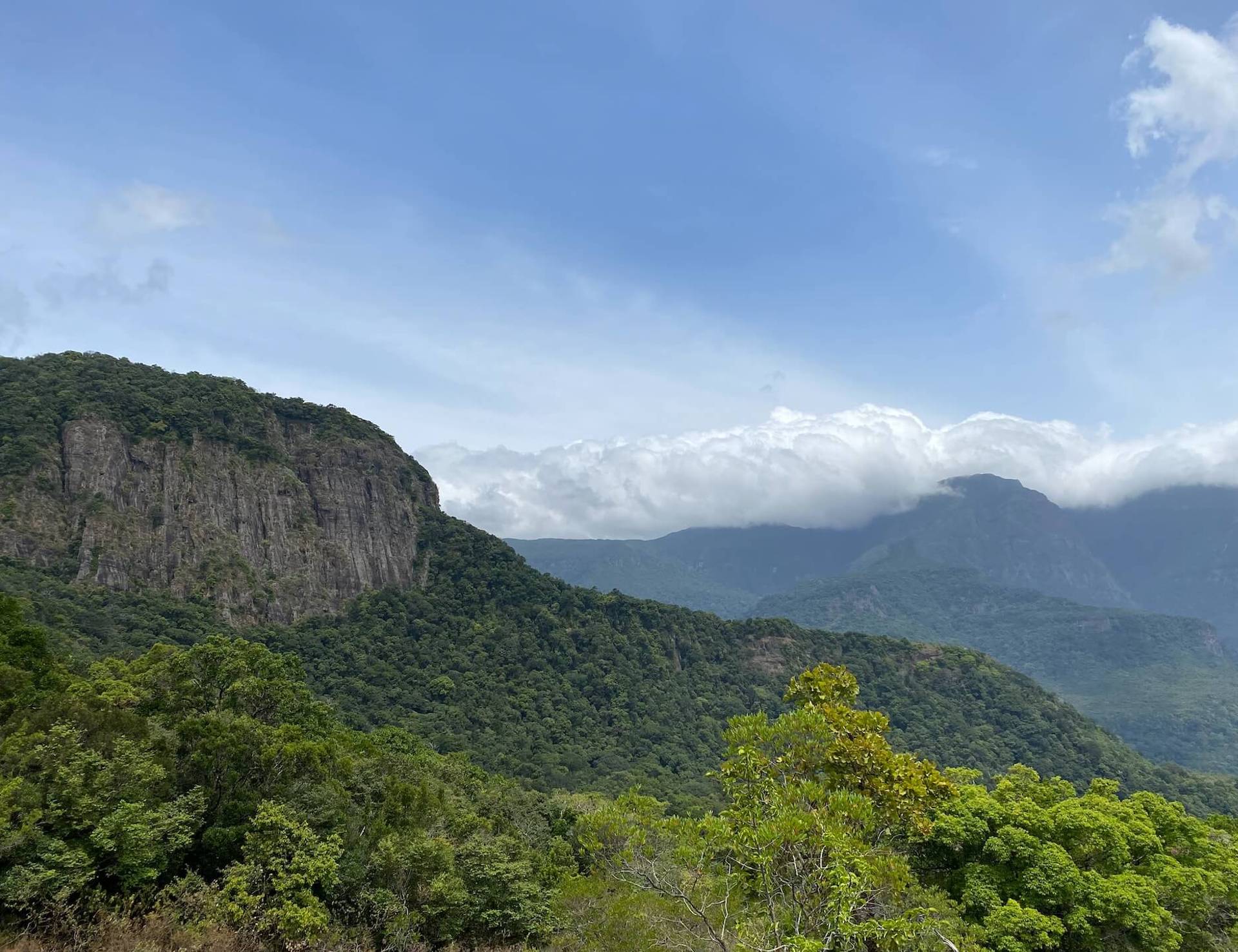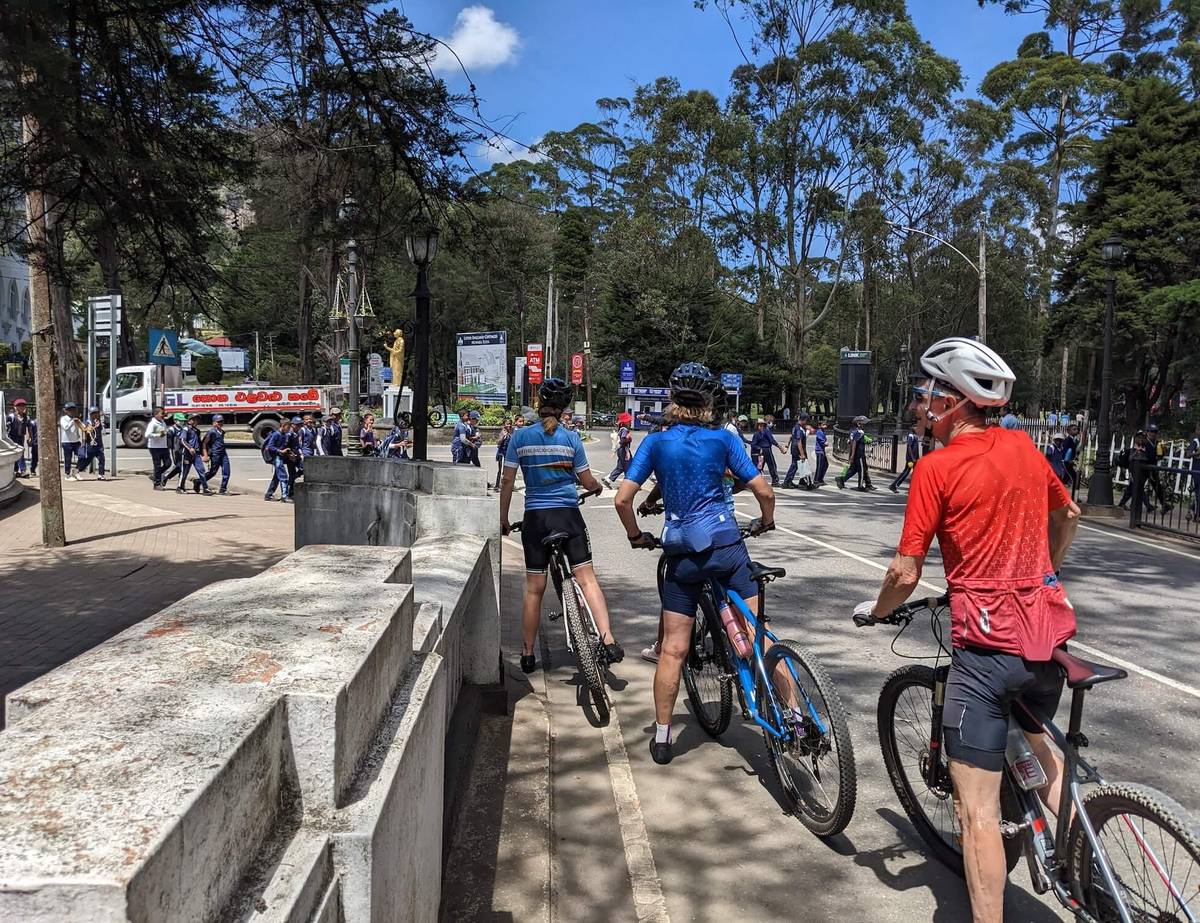
Table of Contents
- 1. Understanding Sri Lanka
- 2. Why Go Cycling Sri Lanka?
- 3. What are the Best Places to Cycle in Sri Lanka?
- 4. What are the Best Cycling Routes in Sri Lanka?
- 5. When is the Best Time to Cycle in Sri Lanka?
- 6. Enjoying Sri Lankan Cuisine
- 7. Sri Lanka Visa Requirements
- 8. Vaccines and Medicines
- 9. Handy Info
- 10. Through the Notes
- 11. Embrace the Cycling Tour in Sri Lanka
Understanding Sri Lanka
Topography — Sri Lanka is a tropical island in the Indian Ocean, situated between the latitudes 5° and 10° N, and longitudes 79° and 82° E. It shares maritime borders with India to the north, and Maldives to the west.
The country is mostly flat, with a small highland region in its center. This highland region is also where Sri Lanka’s best tea growing regions are concentrated. Biking in Sri Lanka is a unique experience where cyclists can ride through a variety of terrains ranging from high mountains to sandy beaches without having to cover long distances.
Fauna & Flora — Sri Lanka boasts a rich diversity of fauna and flora. Its lush rainforests are home to unique species such as the Sri Lankan elephant and the elusive leopard. The island's vibrant coastal ecosystems teem with marine life, and its tropical forests host an array of colorful birds, including the endemic Sri Lankan junglefowl. With numerous national parks and protected areas, Sri Lanka offers cycling enthusiasts a invigorating experience amidst its remarkable biodiversity.
Climate — Sri Lanka features a tropical climate characterized by two distinct monsoon seasons. Temperatures vary across the island, with coastal areas typically ranging from 25 to 32°C and cooler mountain regions with temperatures of 15 to 20°C. Sri Lanka's climate provides a wide range of experiences, from tropical beaches to cooler highlands.
Economy — Tea is central to Sri Lanka’s economy, with the country being the second largest exporter of tea after China.
The other major driver of Sri Lanka’s economy is tourism, driven largely by the string of beautiful beaches all along its coastline. Sri Lanka is a relatively prosperous country, having a higher human development index (HDI) than most other countries in South Asia. The country has a population of around 22 million people. Colombo is Sri Lanka’s capital and its largest city.
Dreaming of cycling in Sri Lanka?
Explore Our Amazing Bike Tours in Sri Lanka Now
Why Go Cycling Sri Lanka?
Sri Lanka combines exceptional natural beauty with over 3,000 years of history and culture, making cycling in Sri Lanka an unbeatable experience.
Here are 5 reasons why you should consider cycling Sri Lanka:
-
Diverse Landscape — Sri Lanka offers a rich variety of landscapes within a relatively small area. Its geography varies from tropical highlands to lush green paddy fields to golden sandy beaches. The terrain varies from flat coastal roads to challenging mountain climbs, catering to cyclists of all levels and preferences.
-
Rich Cultural Heritage — Cycling in Sri Lanka provides the opportunity to explore the country's rich cultural heritage. You can visit ancient temples, historic cities like Anuradhapura and Polonnaruwa, and experience the local way of life in rural villages.
-
Stunning Natural Beauty — Sri Lanka is a compact country that packs in a remarkable variety of landscapes. It is, quite simply, one of the most beautiful places on earth. In 2010, The New York Times rated Sri Lanka #1 in its list of the top 10 places to visit in the world. In 2023, it was rated among the top 10 most instagrammable places in the world by EnjoyTravel.
-
Captivating Wildlife — Sri Lanka has one of the highest rates of biological endemism in the world, meaning several species of Sri Lanka’s flora and fauna are not found anywhere else on earth. These include the Sri Lankan elephant and the Sri Lankan leopard. In fact, Sri Lanka is one of the few places on earth where you can simply ride past elephants as they graze peacefully in the meadows.
-
Safe — When it comes to cycling, Sri Lanka is one of the safest places to travel to. Worldpackers rated Sri Lanka among the top 13 safest countries in the world to travel to. Colombo, Sri Lanka’s capital, was ranked by Der Standard as the second safest city in the world for solo women travelers. It also has well-developed infrastructure and welcoming locals, meaning cyclists can expect good-quality roads with little traffic in the countryside along with world-class hospitality.
What are the Best Places to Cycle in Sri Lanka?
Sri Lanka provides a variety of landscapes and regions that are ideal for cycling enthusiasts. Whether you prefer scenic coastal routes, challenging mountain terrain, or exploring cultural treasures, here are some of the prime destinations for biking in Sri Lanka:
1. The Cultural Triangle
The cultural triangle refers to a set of three ancient sites — Anuradhapura, Polonnaruwa, and Sigiriya — located in north-central Sri Lanka. Also visited as a part of the cultural triangle are Dambulla Caves and Kandy. All five are UNESCO World Heritage Sites.
The cultural triangle is remarkable both because of its history, and the visual spectacle it presents. Anuradhapura, for instance, is one of the oldest continually inhabited cities on earth. It played a central role in the development of Buddhism in the 5th century BC.
The bike ride from Anuradhapura to Polonnaruwa is sprinkled with magnificent ancient ruins, Buddhist temples and ancient archaeological sites. The icing on the cake is the spectacular Sigiriya rock fortress in Dambulla — a massive column of granite rising a sheer 590 ft above the surrounding forest-covered plains. Once a flourishing town, complete with a royal palace and monasteries, Sigiriya today has beautiful frescoes covering its rocks along with ruins of ancient structures dating back to thousands of years.
2. The Central Highlands
The central highlands in Sri Lanka consist of plateaus and mountain ranges covered with tea estates and tropical rainforests. The entire region is recognized as a UNESCO World Heritage Site because of the very high number of endemic species of flora and fauna it harbors.
A unique feature of this region are cloud forests, wherein the dense rainforests remain enveloped by cloud cover at the canopy level, presenting a striking picture.
There are three protected areas in the central highlands:
- Peak Wilderness Sanctuary
- Horton Plains National Park
- Knuckles Mountain Range
Kandy, Nuwara Eliya, and Ella are the major destinations in this region. The best quality Ceylon Tea also comes from the central highlands region.
The spectacular Sigiriya rock fortress is also located in the Dambulla town in the Central Highlands. Dambulla, along with Sigiriya, and Anuradhapura are popularly called the “cultural triangle” of Sri Lanka.
The climate in the central highlands is cool for most of the year and is ideal for cycling. The elevations, however, can be challenging at certain places.
3. The Southern Plains
The southern plains form a transition area between the central highlands and the coast. The main attraction in this region is the Udawalawe National Park, an important habitat for the Sri Lankan elephant. Also worth seeing are the Udawalawe dam and reservoir.
The terrain in this part of Sri Lanka is mostly flat, and the weather can get hot in the summer.
4. The Coast
Sri Lanka’s long coastline is peppered with some of the most beautiful beaches in the world. Some of the most important Sri Lankan cities such as Colombo, Galle, and Negombo are also located along the coast.
Besides offering great views of the sea, Sri Lanka’s coastal towns are vibrant, cosmopolitan hubs that also offer enriching cultural and culinary experiences.
What are the Best Cycling Routes in Sri Lanka?
The best cycling routes in Sri Lanka cover the three main geographical regions mentioned above. However, each route covers a different set of destinations.
This cycling route starts from Negombo, a lagoon located 37 kms north of the capital Colombo. The town has beautiful Dutch and Portuguese buildings dating back to the 16th century. The route then moves in a north-westerly direction to Sigiriya, before turning abruptly southwards towards Kandy. At this point, the topography has changed from the coastal plains to the central highlands. From Kandy, the route moves south-east towards the coastal town of Galle via the Udawalawe National Park. The route then ends at Colombo, just short of its starting point at Negombo.
Highlights:
- Visit charming Dutch and Portuguese buildings dating back to the 16th century in Negombo.
- Ride through Sri Lanka’s famed cultural triangle at Sigiriya and Polonnaruwa
- Stay in beautiful tea estates in the central highlands around Kandy
- Ride through Nuwara Elya, known as “Little England” for its Victorian architecture, lush meadows and picturesque valleys
- Visit Pattipola, the highest railway station in Sri Lanka at 1,897m above sea level.
- Experience Horton Plains National Park, with its unique ecology consisting of tropical montane grasslands and cloud forests
Unlike the previous cycling route, this one takes the cyclist straight to the tea-covered hills of Kandy, bypassing Sigiriya. From Kandy, the route goes south to the coastal town of Tangalle, known for its numerous irrigation canals and sandy beaches. From Tangalle, the route takes a north-westerly course back to Colombo.
Highlights:
- Ride through the famed tea estates around Kandy and pay a visit to the Ceylon Tea Museum housed in the Hanthana Tea Factory
- Stay at the charming hill station of Ella, and hike through the Horton National Park visiting well-known attractions such as the Little Adam’s Peak, and the Nine Arches Bridge
- Visit the Udawalawe National Park, home to large herds of wild Sri Lankan elephants
- Cycle along the numerous irrigation canals that lead to the beach resort of Tangalle, known for its white sands and turquoise waters.
This route heads from Negombo to Kitulgala, a famous white water rafting destination. The Academy award winning Hollywood film, The Bridge on River Kwai was filmed in Kitulgala. The route then heads south to the Knuckles mountain range via Kandy. It passes the towns of Nuwara Eliya and Ella, known for their scenic tea plantations, before descending on to the coast at Weilgama. Weligama is a famous destination for snorkeling, surfing, and coral watching.
Highlights:
- Enjoy watersports in Kitulgala, the wettest place in Sri Lanka
- Ride through captivating tea plantations in Kandy
- Hike through the majestic Knuckle Mountains, with their peaks covered with cloud forests
- Explore the Galle fort, a UNESCO World Heritage Site in the beach town of Galle
Planning a cycling holiday in Sri Lanka?
Dive into our curated Sri Lanka cycling adventures today!
When is the Best Time to Cycle in Sri Lanka?
Given its tropical climate, Sri Lanka experiences two distinct monsoon seasons. The west and south-west coastal areas receive rainfall from May to September, while the northern regions and the east coast see rain between October and February. It's worth noting that these rains are generally short, with occasional heavy downpours.
Excluding the monsoon periods, the remaining months offer abundant sunshine and tend to be mostly dry. Temperature-wise, Sri Lanka maintains a fairly consistent climate year-round. Coastal areas typically range from 25 to 32°C, while mountainous regions experience temperatures of 15 to 20°C. The island is also humid, with relative humidity levels varying between 60% and 90%.
In essence, Sri Lanka is a nearly year-round cycling destination, making it possible to enjoy biking throughout the year.
Enjoying Sri Lankan Cuisine
Being a tropical island, Sri Lanka’s cuisine is dominated by preparations made from rice, fish, coconut and spices such as cinnamon and black pepper that grow in abundance there. Additionally, Dutch, Portuguese, Indian, and Malay influences have also shaped Sri Lanka’s cuisine due to historical and geographical reasons.
Some must-have Sri Lankan dishes to try on your visit include:
-
Fish Ambul Thiyal — Also known as sour fish curry, it is prepared by cutting fish into cubes, then sauteing it in a blend of spices including cinnamon, pepper, turmeric, garlic etc.. The curry’s distinctive sour taste comes from a fruit called Goraka or brindle berry which is added while the ingredients are simmered in water.
-
Bolo Fiado — Bolo Fiado is a Sri Lankan pastry made with wheat flour, butter, and egg, and filled with cashews, resins, and rose water. The dish was introduced to Sri Lanka by the Portuguese, who first arrived on the island in the early 16th century. Over time, however, it has evolved into a unique Sri Lankan confectionery.
-
Lamprais — Lamprais is the Sri Lankan pronunciation of “Lump Rice”, a dish introduced to Sri Lanka by the Dutch settlers who replaced the Portuguese in the 17th century. It is an elaborate dish, consisting of a three-meat curry — usually chicken, pork, and beef — along with frikadeller meatballs and fried rice. All these ingredients are then wrapped in banana leaves and either baked in an oven, or steamed. The dish is served with sambol chili sauce.
-
Puttu — Puttu is a cylindrical dish made of ground rice and coconut shavings steamed together, and served with either a curry, or a sweet side dish such as palm sugar. It is most commonly had as breakfast in Sri Lanka.
-
Wood Apple — The wood apple is a ubiquitous sight in Sri Lankan markets. About the size of a large orange, the apple has a brown outer shell that contains a pulpy interior that resembles crushed raisins. It is commonly mixed with jaggery and water to make a thick smoothie with a sweet and sour taste, making it one of Sri Lanka’s favorite drinks.
Finally, coconut water is an ubiquitous Sri Lankan beverage that cyclists can especially enjoy on a cycling trip. The king coconut, in particular, is a variety of coconut endemic to Sri Lanka that makes for a refreshing and energizing drink for cyclists. It is rich in several minerals including potassium, vitamins, and natural sugars.
Sri Lankan tea can be enjoyed at most roadside stalls while biking.
Sri Lanka Visa Requirements
Visitors to Sri Lanka arriving in the country for tourism, holidaying, or sports-related activities are required to obtain a tourist visa.
Since 2012, the government of Sri Lanka has started issuing all visas in the electronic format. These eVisas, also known as electronic travel authorization (ETAs) are valid for 30 or 90 days, depending on the type of tourist visa applied, and are extendable for a maximum of 180 days.
All applicants applying for a Sri Lankan ETA must:
- Make sure they are a citizen of one of the 100+ countries for which Sri Lanka issues ETAs.
- Have a passport, with a validity of no less than six months from the date of arrival
Additionally, once an ETA has been issued to a visitor, they may be required to show the following documents upon arrival in Sri Lanka:
- A confirmed return ticket
- Proof of funds sufficient to cover their expenses while in Sri Lanka
Travelers have to carry a printed copy of their eVisa upon arrival.
For more information on the Sri Lankan ETA, refer to the government of Sri Lanka’s official ETA application website.
Although Sri Lanka issues visas on arrival in some cases, it is advisable to obtain an ETA prior to arrival. Citizens of Singapore, Seychelles, and Maldives, however, are exempt from the requirement of having to obtain an ETA for visiting Sri Lanka.
It is important to note that Sri Lanka does not issue ETAs who intend to participate in the following activities:
- Press conferences, workshops or seminars
- Meetings of a political nature
- Working with NGOs
Visitors desirous of engaging in any of the above mentioned activities during their visit to Sri Lanka must obtain a separate permission from the appropriate authorities in Sri Lanka.
Vaccines and Medicines
Travelers to Sri Lanka may be required to produce proof of vaccination against Covid-19.
Additionally, the US Centre for Disease Control and Prevention (CDC) recommends travelers to Sri Lanka get routine vaccinations for the following:
- Chicken pox
- Rabies
- Measles
- Shingles
- Hepatitis A and B
- Typhoid
Handy Info
Currency
The official currency of Sri Lanka is the Sri Lankan rupee (LKR). As of October 2023, 1 USD = 324.53 LKR.
Most banks and money changers will exchange USD, GBP, Euro and other major currencies into LKR. Large business establishments in major cities may also accept the USD directly for payment. Mastercard/Visa are also accepted in large establishments.
ATMs, however, may not dispense foreign currencies. There are also limitations on the amount of LKR foreigners can bring into the country. Therefore, it is best to exchange a foreign currency for LKR within Sri Lanka itself.
Transport
Sri Lanka is a small country, and domestic flights for traveling within the country are limited.
Buses and trains are the most preferred modes of transport for commuting between Sri Lankan cities for locals. Tourists, however, often prefer private cabs/taxis for inter-city travel as they are more convenient and also relatively affordable.
For traveling within cities, visitors can use tuk-tuks or private cabs.
Language
Sinhala and Tamil are the official languages of Sri Lanka. English is understood by a large segment of the population, and most signboards are in Sinhala, Tamil, and English.
Culture and Religion
Sri Lanka has a rich cultural heritage, with its recorded history dating back well over 2,000 years, and most Sri Lankans are justifiably proud of their culture.
Buddhism is the largest religion in Sri Lanka, followed by over 70% of the population. It is also the state religion. Other major religions include Hinduism (12.6%), Islam (9.7%), and Christianity (7.6%).
A 2009 Gallup poll revealed that Sri Lanka is the third most religious country in the world, with 99% of Sri Lankans declaring that religion plays an important role in their everyday lives.
It is important for tourists to conduct themselves respectfully when visiting religious shrines, temples, or monasteries. Ask your tour guide for instructions on the right clothing to wear when visiting religious places. It is also good to ask permission before clicking photographs in places of religious significance. Avoid photographing military establishments while in Sri Lanka
The country has seen ethnic tensions between the majority Sinhala and the minority Tamil communities in the past, and these might be sensitive topics to discuss with locals.
Cricket is the most popular sport in Sri Lanka, and cricket grounds are a common sight across the country. Volleyball is the country’s national sport.
Appliances and Devices
The standard electricity voltage in Sri Lanka is 230 V at 50 Hz. This is the same as that used by most countries in the world ( 220 -240 V) including all European countries, Australia, and New Zealand. However, a handful of countries including the USA, Canada, Mexico, Costa Rica, Japan etc. use 100 - 127 V. Travelers from these countries might need to use a voltage converter to use their electrical appliances.
The power plug sockets used in Sri Lanka are type D, M, and G.
If your device does not plug into any of these socket types, you may need to use a power adapter.
Mobile Coverage
Most Sri Lankan cities have excellent mobile network coverage. However, coverage may be unreliable in rural, remote, or hilly areas.
International travelers can use their mobile phones in Sri Lanka for calling and accessing data as long as they have global roaming activated.
If you intend to stay for long, it would be good to buy a local SIM card.
The main mobile network providers in Sri Lanka are Airtel, Dialog, and Hutch. As of October 2023, 5G services are being rolled out in Sri Lanka.
Time Zone
Sri Lanka falls in the eastern hemisphere and its time zone is GMT+5:30.
What You May Find
Elephants, water buffaloes, tea gardens, Buddhist temples.
Through the Notes
-
Read — The novels of Booker Prize winning Sri Lankan authors Michael Ondaatje and Shehan Karunatilaka
-
Listen — Dilan Jay, a Sri Lankan-American rapper, and the first Sri Lankan to appear on the US Billboard charts
-
Eat — Lamprais, the Sri Lankan delicacy born out of Dutch, Sri Lankan, and Malay culinary influences
-
Watch — The Bridge on River Kwai, and Indiana Jones and the Temple of Doom, both of which were completely shot in Sri Lanka The Funny Boy is a coming-of-age film set in 1990s Sri Lanka
-
Drink — The world-famous Ceylon Tea, wood apple juice, coconut water
Embrace the Cycling Tour in Sri Lanka
Sri Lanka is a breathtakingly beautiful country, and a well-organized cycling holiday in Sri Lanka offers a unique way to take in all that the emerald island has to offer at your own pace, and at close quarters.
Art of Bicycle Trips, a pioneer in crafting curated cycling holidays for over a decade, offers expertly guided bike tours in Sri Lanka. Experience the pinnacle of comfort and safety with handpicked hotels, local cultural encounters, seasoned tour leaders, and a dedicated support vehicle.
Ready to cycle Sri Lanka?
Get started with your cycling adventure today!

